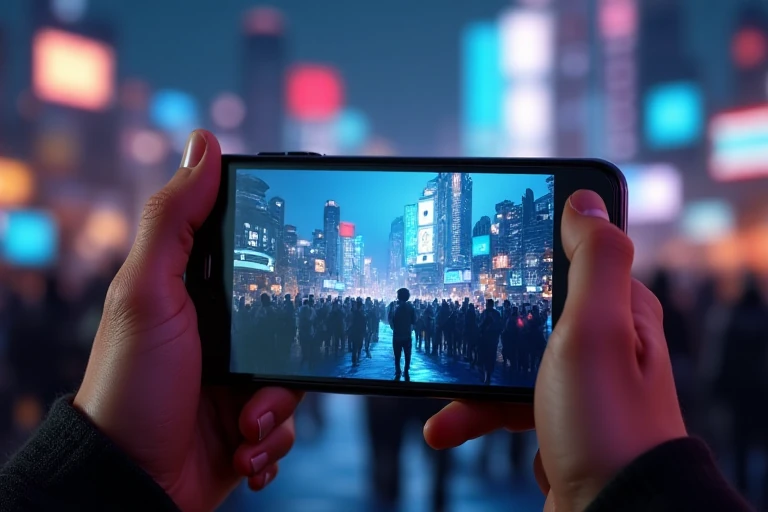Mobile gaming has exploded in popularity and profitability in recent years. Games like Candy Crush, Pokémon Go, and Call of Duty Mobile demonstrate the huge monetization potential of mobile games. While the market is competitive, there are still many opportunities for indie developers to release hit games and build sustainable businesses. This beginner’s guide will walk you through the key steps for developing games for Android and iOS.
Getting Set Up for Mobile Game Development
Required Hardware and Operating Systems
Mobile game development demands powerful, capable hardware and software to build games that match the graphical quality, storage needs, and processing speeds of today’s latest devices. Some of the key hardware and software requirements include:
Most computers from the past five years with a dedicated GPU that supports at least OpenGL 3.1 will suffice. You will also need a minimum of 8GB of RAM, SSD storage for faster speeds, and an Intel Core i5 or equivalent processor. On the software side, you need Windows 10 or the latest versions of macOS if you are using a Mac. Both Unity and Unreal run on these operating systems for easy-to-use platforms to start developing your games.
Game Engines
Game engines like Unity and Unreal Engine offer a great way for beginners to get their feet wet in developing actual mobile games. The user-friendly platforms lower the barrier to entry by providing visual editors, rendering engines, built-in support for tons of mobile platforms, and much more to assist with mobile game creation.
Most new developers get started with Unity since it is free and open source with a massive community to resolve any issues that arise. Unreal Engine offers a more robust set of graphical features but can have a steeper learning curve and works better for more complex 3D games. But both represent excellent options for quickly getting something interactive up and running.
App Store Developer Accounts and Fees
To publish your games on any app store for mobile devices, you need to enroll as an official developer which requires yearly program fees. For Apple’s ecosystem, that means paying $99 per year for the standard Apple Developer Program to publish to their App Store across iPhone, iPad, Apple TV and other devices. There are additional enterprise tiers too if your organization requires more capabilities.
On the Android side, you pay a one-time $25 registration fee for a Google Play Developer account, which never expires. However, both platforms also take a percentage cut of earnings from any paid games or in-app purchases generated. So account for app store fees in your forecasting and be sure to understand each store’s guidelines.
Set Up with Android Studio and Xcode
To compile and deploy your mobile game after development via a game engine, you need to install and learn the native IDEs and tools for each platform: Android Studio and Xcode. These allow you to connect the development environment to either your own device via USB or to system emulators that mimic different mobile devices for testing.
Android Studio gives you a way to build your game into APK packages ready for the Play Store using Java/Kotlin and the required libraries. Apple’s Xcode does the same for iOS/iPadOS apps in creating IPA files with the proper certificates to publish on the Apple App Store through their submission process using Swift or Objective-C. Having a basic grasp of these tools is essential to finishing and shipping mobile games on their respective platforms.
That wraps up the key hardware, software accounts, and app development platforms required for mobile game creation from scratch and publishing completely on your own. Leverage free game engines then master platform quirks with Android Studio and Xcode for success!
Learning Programming Languages
Developing games for mobile platforms requires an understanding of key programming languages to bring ideas to life. Whether working solo or joining major studios like Epic or Activision, sharpening your coding skills in languages like C#, Swift, and Java poses a necessary foundation before diving into the game engines and tools that speed up development. Arm yourself with the right coding knowledge to build the next viral hit!
C# with Unity for Cross-Platform Magic
Unity provides a top game engine and editor for 2D and 3D titles across mobile, console, and PC, partially thanks to its integration with C# for scripts powering mechanics, UIs, tools, and more. Learning C# fundamentals transfers nicely to Unity projects where you attach behaviors to objects, define variables, instantiate prefabs, and control the flow while tapping into the engine’s robust features.
Swift Brings iOS Visions to Life
For those interested in Apple platforms from iPhone to Apple TV, Swift offers an intuitive language perfect for crafting experiences in Xcode while integrating tightly with iOS, iPadOS, and macOS APIs. Swift is influenced by languages like Python and Kotlin but adds modern features like type safety and faster speeds. Get familiar with syntax and Apple’s MVC paradigm before diving into Apple-specific frameworks like SpriteKit or building standalone Swift games.
Java: Android’s Main Language
Java enjoys immense popularity as a general purpose language well-suited for Android game development too. Since Unity supports Java compilation alongside C#, you can write once and publish to both stores more easily. Understanding Java’s strict object-oriented approach helps when managing game states and designing everything from menus to levels. Android Studio even provides profiling tools to improve performance of your Java code.
Input/Output Fundamentals
Whether taking joystick or touch screen user inputs to trigger responses in-game, or whether saving high scores locally via data persistence, learning input/output handling remains foundational. Console logging, conditional statements, variables, data serialization with JSON/XML, and fluently reading API documentation all come into play for appropriate input/output across mobile games of any scope.
iOS vs. Android: Key Differences
Despite shared languages and concepts, iOS and Android game development diverge in meaningful ways like UI patterns, signatures, and native SDKs. For iOS, expect strict app review requirements and a more consistent landscape of device specifications to support. Android offers greater hardware diversity and customization, but fragmentation poses challenges. Architect games thoughtfully using game engines to minimize platform-specific code and simplify releases on both stores.
Building Your First Simple Mobile Game
Aspiring to develop the next monumental esport or 100-hour RPG is common for new game designers. But classic titles like Snake and Flappy Bird teach us that novel, focused gameplay built simply and polished extensively can lead to surging popularity. Before tackling advanced projects, first-timers should create a streamlined mobile game to learn the ropes.
By establishing an iterative workflow, honing design with tangible mechanics, and publishing Quick Win titles, developers prime themselves for more complex later work through gained wisdom.
Embrace Constraints with 2D Graphic Games
The grand visions filling notebook sketches and whiteboard walls certainly seem glorious. But for early projects, embrace limitations around scope and complexity to ensure achievable milestones. Start by assessing capabilities then develop game concepts fitting for beginners, like casual 2D experiences perfect for mobile.
Focus engineering efforts on core gameplay loops, user input processing, UI navigation, and scoring/stats tracking. Prototype rapid ideas with placeholder shapes and graphics to test engagement before visual polish. Save intensive rendering and animations for later.
Survey Mobile Genres to Inspire Your Concept
Countless niches exist within mobile gaming, including arcade-style experiences best suited for initial attempts by indie developers. Study the app stores to inventory genres, learn what is stale, and brainstorm fresh approaches. For example, merge match-3 puzzles with casual strategy by introducing competitive elements against AI or online opponents.
Select a genre then put your own spin on conventions and controls to stand out. For quicker development, build off game mechanics commonly refined across the industry, but introduce something unique so players remember your title.
Start Building Gameplay Immediately
Eager newcomers often doom projects by yielding to feature creep that tries doing too much. Scope small. Define MVP playable builds that demonstrate novel value early, then expand iteratively. Using agile sprints to construct gameplay and mechanics prevents wandering off-course before addressing core engagement and fun.
After choosing simplicity via 2D graphics and a familiar genre, create a rough flowchart or user story map exploring player paths. Construct an initial playable limb by coding bare necessity mechanics next. Then playtest quickly, observe response, and build incrementally to accelerate progress.
Prototype, Playtest and Repeat
Dedicate consistent hours to active prototyping by slapping placeholder assets together into a functional vertical slice of critical app flow — maybe main menu to game session to score display. Test the slice yourself and gather observer feedback without attachment to any one approach. Be willing to pivot concepts completely after data gathering.
Implement tweaks, modifications, alternatives, and new features in rapid succession while documenting learnings. Destroy and rebuild mechanics until discovering an addictive core loop. Persist with playtesting to inform direction, then eventually shift focus towards finishing graphics, sounds, and monetization.
By starting simple and safe with mobile-friendly 2D projects in proven genres, developers gain confidence for more advanced work down the road. Construct playable prototypes on a weekly basis. Gather responses, build intuition, and lay groundwork for your studio’s future through launches teaching the process.
Developing Mobile Game Graphics
The spectacular graphics benchmarking mobile experiences like Genshin Impact demonstrate the vital role visuals play in gameplay immersion and app store conversion. While beginners need not render expansive open worlds right away, understanding graphical optimization, sourcing quality assets, and leveraging tools ensures excellent results.
Before coding complex systems, conceptualize an attainable art style. Analyze asset sourcing options. Refine artwork and 3D models until they both impress aesthetically and achieve high performance. This allows directing maximum effort into compelling mechanics layered on top of solid technical foundations.
Construct an Art Style Within Mobile Limitations
Concept artists fill sketches with breathtaking environments and vistas. But engineering realities introduce polygon counts, draw calls, texture limitations, and processing tradeoffs. Study popular mobile games to identify asset styles stretching mobile GPU capabilities while retaining accessibility.
Bright, vibrant palettes using normal maps and stylized textures instead of high-polygon sculpts simplify development. Polygonal 2D artwork and pixelated retro aesthetics also render efficiently while looking sharp on screens. Concept your vision appropriately before asset creation.
Sourcing Mobile Assets for Savings
While custom artwork conveys ultimate creative vision as a developer, sourcing existing 2D sprites, 3D model packs, particle effects, and animations saves massive effort. Unity Asset Store, Unreal Marketplace, and various 3D sites offer high-quality art optimized for games and ready for import into projects.
Give prototyping toolkits and asset packs a spin to validate ideas faster before any custom work. Establish proof of enjoyment first. Successful launches can fund future investment into tailored assets for sequels and company brand identity through a custom look and feel.
Prioritizing Optimization Throughout
Continually analyze performance implications of textures, materials, shaders, physics and character rig complexity while developing. Mobile chipsets still face RAM, processing and battery limitations compared to PCs and consoles despite yearly hardware gains. Test graphical performance often on various target devices.
Simplify character meshes. Use occlusion culling for offscreen assets. Downscale large textures. Compress audio files. Apply visual effects judiciously. This achieves better stability and load times which minimizes player frustration during the critical first session with a new game download.
Must-Have Tools for Graphics Production
Numerous industry-leading software options exist for crafting stunning 2D art, dazzling 3D assets, spectacular visual effects, and breathtaking animated films. But many specialize in films and are overkill for real-time mobile game graphics. Prioritize game-ready solutions offering better model budgeting, texturing tools, animation rigging, and asset exporting.
Key tools like Blender, Unity content creation addons, Aseprite, and more gain favor in game circles. Their workflow focus, price points, and continuous improvement through open source development or funding by supportive communities keep them relevant for the latest mobile platforms.
Mobile Game Data Saving and Monetization
Whether crafting casual hyper-casual timewasters or hardcore RPGs spanning years, every modern mobile game requires backend infrastructure for crucial functions like progression saving and revenue generation. Mastering data persistence approaches, mindful in-app purchase design, and localization dramatically increases the appeal and earnings potential of game projects.
This guide explores practical data saving options, best practices for integrated monetization, tips for clearing app store policy hurdles, and the immense value of multi-language support for finding success in global markets.
Flexible Data Saving Options
Players invest hours deepening mastery and personalization, expecting their journey and accomplishments persist securely. This means tracking statistics, inventories, progression milestones, and more locally or remotely. Unity and mobile SDKs provide data storage APIs out the box.
Light saving needs leverage the simplicity of platform-specific solutions like PlayerPrefs. But larger games require structured remote data backed by databases. Serialization formats like XML and JSON flexibly meet data portability and reading/writing needs while integrating with major database engines.
Monetization Done Right
Even passion projects require funding for sustainability and growth. Monetization like ads and in-app purchases provide revenue when balanced alongside enjoyment. Ensure core gameplay rewards players without paywalls blocking progress. Gate convenience-based upgrades or visual cosmetics to stay ethical.
Analyze financial reports and player feedback to tune economic balance continually. Major mistakes get caught early when we openly discuss money matters rather than hide the reality of business. Prioritize fun first while still covering costs. Players understand supporting developers when free experiences feel whole on their own.
App Store Policy Jigsaw
Mobile platforms rightfully implement guidelines protecting users from instability, manipulation, objectional content or illegal practices. But the nuances around monetization, data collection, subscription management and more seem eternally complicated to decipher.
Thoroughly study rules for each store before development begins. Ask clarifying community questions. Build compliant backends and financial systems from the start to avoid rejection. Significant development delays or complete project blocking can occur otherwise. But smooth sailing awaits the informed.
Localization Multiplies Potential
Consider every language localization opportunity the equivalent of launching your game successfully from scratch in a brand new market. Translation and culturalization effort pays itself back tremendously by showcasing your game to more people.
Though initially supporting just one language keeps scope small, build localization readiness into architectures early. Plan to iteratively expand language packs over time. Spanish, Portuguese, Japanese, simplified Chinese stacks remain particularly impactful to games reaching more users internationally across key mobile ecosystems.
Testing, Polishing and Publishing Your Game
Completing an initial playable build brings excitement after months immersed in lines of code, 3D assets, level design documents and framework architecture. But product launches demand extensive testing, iterative polish and platform-specific readiness evaluation before release submission.
Treat the testing phase as sacrosanct for cementing quality. Build automation suites. Acquire diverse mobile devices. Construct debugging UI. Evaluate performance vigorously using profilers while squashing crashes. Refine holistic fun and accessibility in response to feedback. Finally, pass store compliance checks and build marketing materials.
Automated Testing Catches Regressions
Manual playthroughs alone rarely exercise all features or identify every regression bug a new code changeset introduces. Automated testing leverages scripts mimicking user sessions which run unaffected by fatigue to stress test nightly.
Unity Playmode and native platform tools facilitate test creation without dependencies or custom environments. Build unit test suites assessing critical functions in isolation. Automate integration flows covering major system interactions end-to-end. Execute tests automatically for rapid validation after changes, supported by analytics flags for any anomalies.
Real Devices Complement Emulators
Game engines feature emulator suites that model the most common mobile chipsets, display sizes and OS versions to preview experiences during development. However, consistently testing builds on actual devices uncovers surprising compatibility issues an emulator alone would not reveal.
Beta test groups and internal employees can assist with device diversity for builds in exchange for free codes. Individual purchases of used flagship phones every few generations also helps sampling more hardware. Evaluate performance on both high and low-end devices using debug stats overlays built into tools.
Beta Feedback Drives Iterations
Leverage beta testing periods for gathering qualitative feedback beyond just bug reports. Request testers detail areas of confusion, suggestions for better onboarding, feature requests, commentary on monetization balance and more. Identify consistent friction points in UX flow or tutorial pacing.
Assess retention falloff points where users churn by analyzing custom telemetry events. Then trace back to the origin through playtesting and heat map tools. Implement tweaks addressing pain points during a polish period, then gather fresh beta responses to validate resolutions.
Consistency Across Mobile Ecosystems
Unlike PC and console development, mobile game porting requires parallel work customizing UI conventions, integrating platform proprietary systems for trophy achievements, social connections, cloud saves and latency mitigation services like Apple Game Center.
Create custom input handlers and build scripts for compiling C# projects properly for each ecosystem. Evaluate App Store and Play Store guidelines early while enabling any required parental controls, age ratings or geofencing. Submit through official channels well in advance of desired launch for certification approval.
Final Tips for Indie Developers Ready to Launch
After absorbing the guides and best practices covering technical competencies, asset creation, monetization ethics, and polish workflows, the final mental hurdle stopping many newcomers from releasing their promising projects revolves around launch timing anxiety and coordination.
The reality is perfect moments rarely exist, and success depends less on external factors beyond your control versus craftsmanship invested during development plus community goodwill accumulated. Devise a reasonable internal checklist covering essentials like platform compliance, localization readiness, branding, and seed community building.
Pitch your Plinko game to gather wishlists and gauge interest across forums new developers frequent. Prepare a press kit for influencers. Allow generous padding for any last-minute delays, since they invariably occur. Then pick a viable launch window and commit fully to build awareness immediately after publishing goes live across app stores simultaneously.
Advertise discounts for the first 72 hours to attract early adopters key for algorithmic featuring. Capture feedback responding to hype cycles in the days following launch, when visibility remains high but retaining users long-term starts demanding incremental polish and content updates. Consider soft launches or early access periods to ease team bandwidth strain when supporting live operations.
Above all, keep perspective and patience at the core when embarking upon the most thrilling and turbulent phases after shipping mobile games. Trust in original visions while welcoming community wisdom. Iterate based on data instead of anxiety. And lay foundations sustaining studios for future projects destined to refine skills further.
The time awaits eager developers ready to leverage mobile platformsʼ flexibility for delivering creativity into the hands of global audiences accessible like never before. May your gaming ventures find prosperity on this journey!











